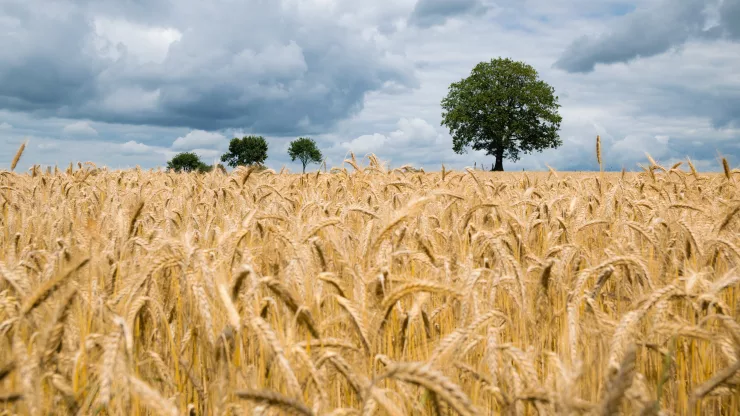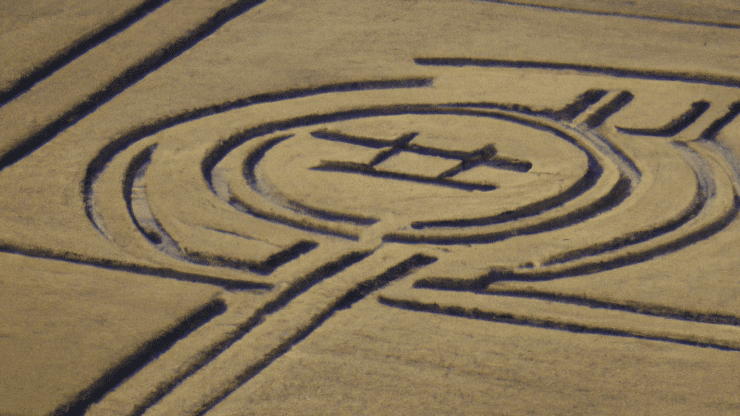Crop circles have been a topic of mystery and fascination for decades. These intricate and often massive formations that appear overnight in fields of crops have puzzled scientists, farmers, and the general public alike.
Despite the many attempts to explain their origins and meaning, crop circles remain one of the most enigmatic phenomena in the world.
In this article, we will explore the mysteries behind crop circles and attempt to unravel their secrets.
Jump to Section
Introduction
The first recorded mention of crop circles dates back to the 17th century, where a pamphlet described a field of oats that formed into a "circular mowing." However, it wasn’t until the 20th century that crop circles began to capture public attention.
The first widely publicized crop circle appeared in Tully, Australia, in 1966, in the form of a circular imprint in a swamp.
Since then, crop circles have evolved to become intricate patterns, often appearing overnight and with no apparent explanation.
They have appeared in fields all over the world, from the United Kingdom to the United States, Japan, and beyond.
What are Crop Circles?
Definition and Characteristics
Crop circles are geometric patterns that appear in fields of crops, formed by the flattening of the crop in a specific manner.
The patterns vary from simple circles to complex geometric shapes, often featuring elaborate designs and intricate formations.
They are typically discovered in fields of crops, including wheat, barley, and corn, and have been observed in many countries around the world.
Brief History
Crop circles have been a topic of interest for centuries, with some reports of similar patterns found in crop fields as far back as the 17th century.
However, it wasn’t until the 20th century that crop circles began to capture public attention.
From the 1970s onward, crop circles began to gain global attention and have since become a widespread phenomenon. The formations have evolved over the years, becoming more complex and intricate, and featuring elaborate designs and shapes.
The Mysteries behind Crop Circles
The Unexplained Patterns
One of the most significant mysteries surrounding crop circles is the unexplained patterns that appear in crop fields. The patterns are often intricate and precise, with an apparent order and design that is hard to explain.
Many of these patterns feature elaborate geometric shapes and intricate formations, suggesting a level of precision and planning that is hard to attribute to natural phenomena.
Possible Explanations
There are several theories about the origins of crop circles, with some proposing that they are the work of extraterrestrial beings, while others suggest they are the result of human-made hoaxes or natural phenomena.
The Extraterrestrial Theory
One of the most popular theories surrounding crop circles is that they are the work of extraterrestrial beings.
Supporters of this theory point to the precision and complexity of the patterns as evidence of an intelligent design beyond human capabilities.
However, no conclusive evidence has been found to support this theory.
The Human-Made Theory
Another theory is that crop circles are the result of human-made hoaxes. Many people have claimed responsibility for creating crop circles, often using planks of wood and ropes to flatten the crops in a specific pattern.
However, not all crop circles can be attributed to human-made hoaxes, and some formations have been found to contain unexplained radiation levels.
The Natural Phenomenon Theory
Some experts believe that crop circles are the result of natural phenomena, such as wind patterns and plasma formations. However, this theory does not fully explain the intricate designs and precision of the formations.
Famous Crop Circles around the World
Crop circles have appeared in fields all over the world, with some becoming famous for their elaborate designs and complexity. Here are some of the most famous crop circles from around the world:
| Location | Year | Design |
|---|---|---|
| Wiltshire, UK | 2001 | The Julia Set |
| Milk Hill, UK | 2001 | The Crooked Soley |
| Chilbolton, UK | 2001 | The Arecibo Message |
| Crabwood, UK | 2002 | The Alien Face |
| Salinas, US | 2004 | The Chilbolton Face |
| Victoria, Australia | 2011 | The Stonehenge Replica |
| Hokkaido, Japan | 2012 | The Yin-Yang Symbol |
The Controversy Surrounding Crop Circles
Hoax or Real?
One of the biggest controversies surrounding crop circles is the question of whether they are real or the result of human-made hoaxes.
While many people have claimed responsibility for creating crop circles, not all crop circles can be attributed to human-made hoaxes.
However, some formations have been found to contain evidence of human activity, such as footprints and tire marks.
The Legal Issues
Crop circles can cause significant damage to crops, leading to legal issues between farmers and crop circle enthusiasts.
Crop circle enthusiasts can face criminal charges for trespassing, while farmers can face financial losses due to crop damage.
The Impact on Agriculture
Crop circles can cause significant damage to crops, leading to financial losses for farmers.
While some crops can recover from the damage caused by crop circles, others are irreparably damaged, leading to a loss of yield and income.
The Science behind Crop Circles
Theories and Experiments
Several theories have been proposed to explain the science behind crop circles, with some suggesting that they are the result of electromagnetic and plasma phenomena.
Experiments have shown that crop circles can be created using electromagnetic fields, leading some researchers to suggest that they are the result of natural electromagnetic phenomena.
The Role of Magnetism, Electromagnetism, and Plasma
Several experiments have shown that magnetic fields and electromagnetic radiation can cause crops to bend and form into patterns similar to crop circles.
Additionally, the presence of plasma in the atmosphere has been linked to crop circles, with some researchers suggesting that plasma formations could be responsible for the patterns.
Unraveling the Enigma of Crop Circles: Explore the Mysteries
Crop circles are one of the most enigmatic and controversial phenomena in the world.
Despite decades of research and investigation, the true origins and meaning of crop circles remain a mystery. Whether the result of extraterrestrial beings, human-made hoaxes, or natural phenomena, crop circles continue to capture the public’s imagination and fascination.
References
- Redfern, N. (2015). The Real History of Crop Circles. New Page Books.
- Delgado, P. (2001). Crop Circles: The Art of the Hoax. Chronicle Books.
- Inglis, B. (1990). Circles and Standing Stones: An Illustrated Exploration of Megalith Mysteries of Early Britain. William Morrow & Co.
FAQ
What are crop circles?
Crop circles are geometric patterns that appear in fields of crops, formed by the flattening of the crop in a specific manner.
What causes crop circles?
The origins of crop circles are still not fully understood, with several theories proposed to explain their formation, including extraterrestrial beings, human-made hoaxes, and natural phenomena.
Are crop circles real?
While many crop circles can be attributed to human-made hoaxes, not all crop circles can be explained in this way.
Some formations contain unexplained radiation levels and other evidence that suggests they may be the result of natural phenomena.
What is the impact of crop circles on agriculture?
Crop circles can cause significant damage to crops, leading to financial losses for farmers.
Can you create a crop circle using electromagnetic fields?
Experiments have shown that crop circles can be created using electromagnetic fields, leading some researchers to suggest that they are the result of natural electromagnetic phenomena.
Greetings fellow space travelers, I am Draco Blaze, creator of Alienated Media who is passionate about exploring the unknown and writing about my experiences with extraterrestrial life.
My focus is on alien encounters and creating thought-provoking sci-fi short stories that transport readers to new worlds and realities.
Feel free to contact me at [email protected].





